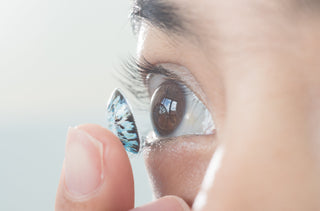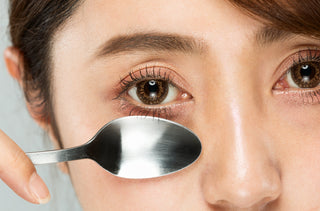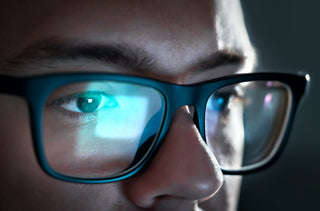Amblyopia is a visual disorder that begins in infancy and childhood. Also known as lazy eye, this eye disorder usually reduces the visual acuity of only one eye. Fortunately, this situation is temporary, as treatments will likely completely resolve the problem when amblyopia is diagnosed early. Find out what amblyopia is, what causes it and how it is treated.
Definition of amblyopia or lazy eye
Amblyopia, also known as "lazy eye," is a weakness of vision that occurs most often in young children. While amblyopia usually affects only one eye, sometimes both eyes can be affected. When this vision problem is detected and treated before age 6, it often resolves completely.
However, when amblyopia is left untreated, the affected eye may experience problems associated with blindness. Without treatment, the eye's vision will decline and become irreversible after a certain stage of development.
It is essential to know that vision develops until the age of 7 or 8. A child developing a lazy eye is a communication problem between the eyes and the brain. In other words, the images transmitted to the brain by a "lazy eye" are not processed when their quality is lacking. This is what creates vision problems.
Fortunately, amblyopia is treatable and can be detected early during an eye exam. That's why it's important to have regular eye exams from a young age.
The Canadian Association of Optometrists recommends that your child be tested:
- Once between six and nine months
- At least once between 2 and 5 years
- Every year, between 6 and 19 years old
What causes amblyopia or lazy eye?
All newborns are born with poor vision. This is normal. As they grow, their vision improves. The eyes must allow the brain to obtain clear and precise images for their vision to develop properly.
If one eye is less efficient than the other, the brain will progressively privilege the eye that works optimally to the detriment of the other. This causes amblyopia.
Some eye conditions can lead to the development of a lazy eye. These include astigmatism, nearsightedness and farsightedness, strabismus, and cataracts.
Amblyopia can therefore be due to a refractive error in one eye. This can happen when the refractive error is greater in one eye because of astigmatism, myopia or hyperopia.
Strabismus can also cause a lazy eye by preventing the eyes from aligning in the same direction.
And although cataracts are rare in children, they can cause amblyopia by clouding the eye's lens.
Be aware that some children, such as those born prematurely or those with a family history of amblyopia, are at greater risk.
What are the symptoms of lazy eye in children?
Here is a list of symptoms sometimes seen in children with amblyopia. But just because your child has one or more symptoms doesn't mean they have an eye problem.
However, don't hesitate to take them to an eye doctor if:
- They have strabismus
- They frequently squint or blink
- They have an eye that wanders inwards or outwards
- They suffer from repeated chalazion
- They have an upper eyelid that is drooping
- They frequently rub their eyes even when they are not tired
- They complain of having regular eye pain or headaches
- They squint or seem to have trouble seeing near or far
- They have a learning disabilityWhile there are several noticeable lazy eye symptoms, sometimes they are only visible when the eyes are examined.
What are the treatments for lazy eyes in children?
The treatment involves encouraging the child to use the affected eye. This can be accomplished by placing an eye patch several hours daily over the eye with better visual acuity. This will strengthen the affected eye.
Eye drops or special glasses are sometimes used as an alternative to the eye patch. These are used to blur the vision of the stronger eye. If the child has other vision problems, such as nearsightedness or cataracts, these will also be considered in the treatment.
Treatment can take several months to several years. However, the affected eye may experience permanent vision problems if it is not done during childhood. And surgery or laser treatment to treat amblyopia in adulthood does not correct this.
The earlier the diagnosis, the better the chances of treating the amblyopia permanently.





















































